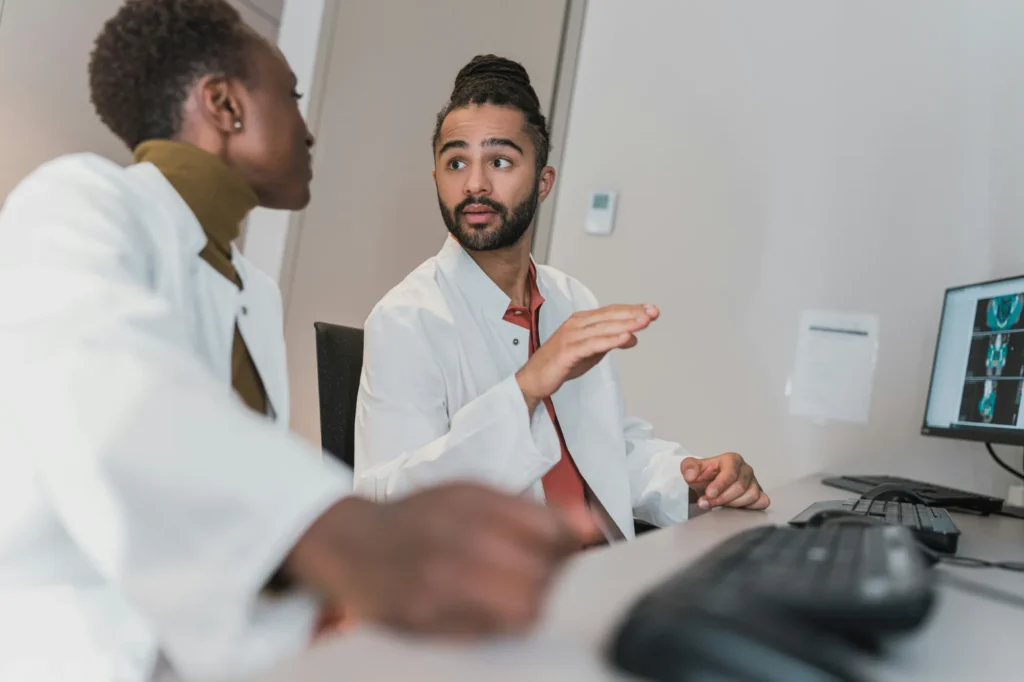For most men, vasectomy is quick, safe, and recovery is smooth. But in a small percentage of cases, men develop ongoing testicular or ejaculatory pain that lasts months or even years. This condition is known as Post-Vasectomy Pain Syndrome (PVPS).
While rare, PVPS can significantly affect quality of life. This guide explains what PVPS is, why it happens, how common it really is, and what treatment options exist.
What Is Post-Vasectomy Pain Syndrome?
PVPS is defined as chronic scrotal or testicular pain lasting more than 3 months after vasectomy. The pain can be constant or intermittent, mild or severe, and may be triggered by activities such as ejaculation, sexual arousal, exercise, or even sitting for long periods.
PVPS is not the same as normal recovery discomfort. Typical post-surgery pain fades within 1–2 weeks. PVPS continues well beyond that and often interferes with daily life or sexual function.
How Common Is PVPS?
- Mild long-term pain after vasectomy is reported by about 1–2% of men.
- Severe, life-disrupting PVPS that requires medical treatment is even rarer estimates range from 0.1% to 1%.
- Online forums often make PVPS seem more common than it is, because men without complications usually don’t post about their experience.
Symptoms of PVPS
PVPS can present in different ways, including:
- Dull aching pain in one or both testicles.
- Sharp or shooting pain in the scrotum or groin.
- Pain during ejaculation, often described as pressure or congestion.
- Discomfort with erections or arousal.
- Swelling or tenderness near the vas deferens or epididymis.
- Pain radiating into the lower abdomen or thigh.
What Causes PVPS?
Doctors believe PVPS has multiple possible causes:
- Congestive pain: Backpressure builds up when sperm continue to be produced but cannot pass through the vas deferens.
- Sperm granuloma: A lump of leaked sperm forms, sometimes irritating nerves.
- Scar tissue or nerve damage: Healing tissue can trap or irritate local nerves.
- Inflammation: Chronic immune response to sperm leakage may trigger ongoing discomfort.
- Clips or surgical technique: Rarely, hardware (like titanium clips) may irritate tissue.
Diagnosing PVPS
If you have ongoing pain after vasectomy, a urologist may recommend:
- Physical exam: Check for lumps, swelling, or tenderness.
- Ultrasound: Look for sperm granulomas, fluid build-up, or vascular issues.
- Urine or semen tests: Rule out infection.
- Diagnostic nerve block: Temporarily numbs the area to confirm nerve involvement.
Treatment Options for PVPS
Treatment is usually step-by-step, starting with the least invasive:
- Rest and NSAIDs: Ibuprofen or similar anti-inflammatories can reduce swelling and pain.
- Supportive underwear: Helps reduce testicular strain.
- Pelvic floor physical therapy: Useful if muscles and nerves contribute to pain.
- Nerve blocks or steroid injections: Provide targeted relief.
- Medications: Such as nerve pain modulators (gabapentin, amitriptyline).
- Surgical options (rare, last resort):
- Vasectomy reversal – relieves backpressure in some cases.
- Epididymectomy – removal of the epididymis if it is the pain source.
- Microdenervation of the spermatic cord (MDSC) – cutting tiny nerves to relieve chronic pain.
Living With PVPS
For men with PVPS, the condition can be frustrating and emotionally draining. Supportive care, counseling, and open communication with partners can help manage the emotional side while working toward treatment. Most men eventually find relief, whether through conservative management or, in rare cases, surgery.
Final Thoughts
PVPS is rare but real. If you’re experiencing persistent pain months or years after a vasectomy, don’t ignore it seek evaluation from a urologist. With proper diagnosis and treatment, most men can return to normal life and sexual function.
For more on related issues, see our guides on vasectomy pain years later and vasectomy complications.
Next step: Use our provider directory to find a urologist or vasectomy specialist near you.

